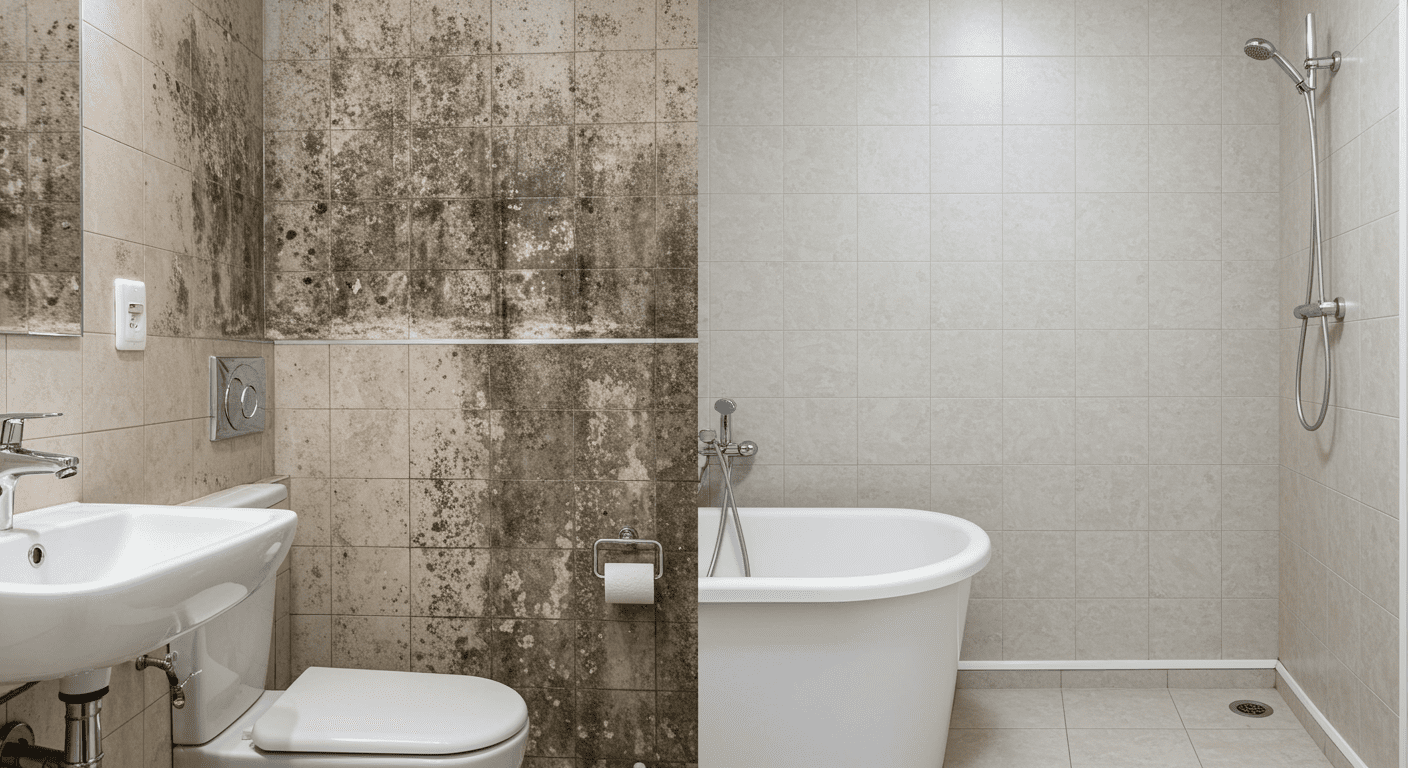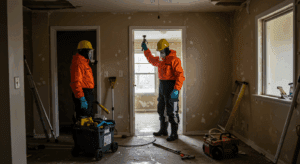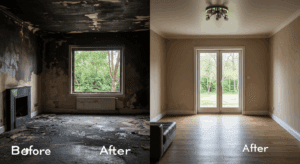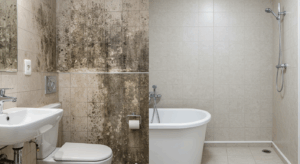Black mould stains are a common and persistent problem in many households. These unsightly stains not only damage the aesthetics of your home but can also pose serious health risks if left untreated. This comprehensive guide will help you understand black mould, identify its presence, remove it effectively, and prevent its recurrence.
Understanding Black Mould
What is Black Mould?
Black mould, scientifically known as Stachybotrys chartarum, is a type of fungus that thrives in damp, humid environments. It appears as dark green or black patches and often has a musty odor. Black mould feeds on organic materials such as wood, drywall, and carpet, making it a common issue in homes with water damage or poor ventilation.
Health Risks Associated with Black Mould Exposure
Exposure to black mould can lead to a range of health issues, especially for individuals with respiratory conditions or weakened immune systems. Common symptoms include coughing, sneezing, skin irritation, and in severe cases, respiratory infections. Prolonged exposure can exacerbate asthma and allergies, making it crucial to address black mould promptly. For more information on protecting your health, explore mould removal services in Jersey City.
Identifying Black Mould Stains
Common Areas for Black Mould Growth
Black mould thrives in areas with high humidity and poor ventilation. Bathrooms, kitchens, basements, and attics are common hotspots. Leaky pipes, roof leaks, and condensation can create the perfect breeding ground for mould. Regularly inspecting these areas can help you catch mould growth early.
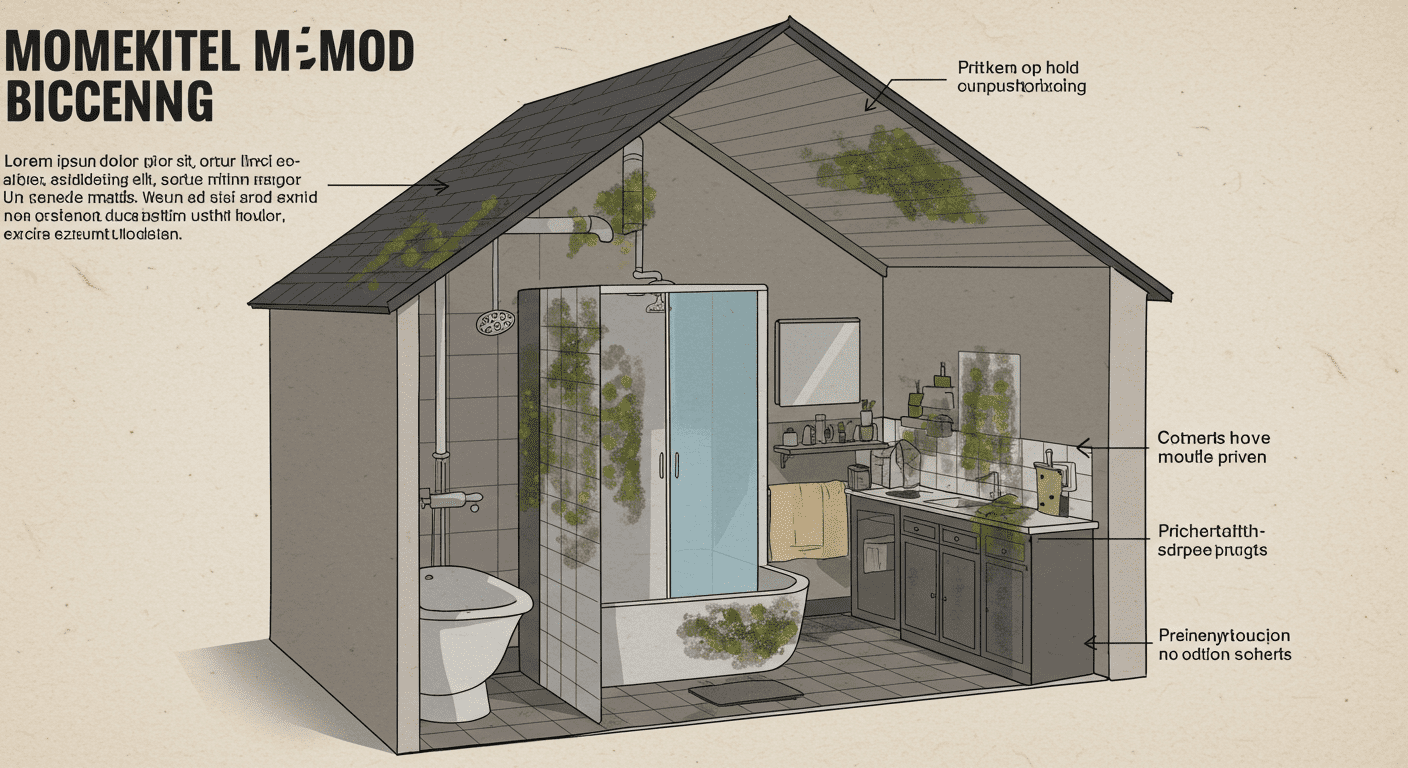
Symptoms of Black Mould Exposure
If you or your family members experience unexplained respiratory issues, headaches, or allergic reactions, black mould could be the culprit. Visible signs of mould include dark stains on walls, ceilings, or floors, often accompanied by a musty smell. If you’re unsure, consider professional testing services like home mould testing in Jersey City.
Effective Removal Techniques
Natural Remedies for Black Mould Removal
Natural solutions like vinegar and baking soda are effective for small-scale mould removal. Mix equal parts of white vinegar and water, spray it on the affected area, and scrub with a brush. Baking soda can be used to absorb moisture and prevent future growth. These eco-friendly methods are safe and cost-effective for minor infestations.
Chemical Solutions and When to Use Them
For more severe cases, chemical solutions like bleach or commercial mould removers may be necessary. Always follow the manufacturer’s instructions and wear protective gear, including gloves and masks, to avoid exposure to harmful fumes. However, chemicals should be used sparingly and only when natural remedies are insufficient.
Professional Help: When to Call an Expert
If the mould infestation covers a large area or recurs despite your efforts, it’s time to call in professionals. Experts have the tools and expertise to safely and effectively remove mould, ensuring it doesn’t return. Check out top black mould removal companies in Elizabeth, NJ for reliable services.
Preventing Future Black Mould Growth
Importance of Ventilation and Humidity Control
Proper ventilation is key to preventing black mould. Use exhaust fans in bathrooms and kitchens, and consider investing in a dehumidifier to maintain indoor humidity levels below 50%. Regularly open windows to allow fresh air circulation, especially in damp areas.
Regular Maintenance Tips for Homeowners
Routine maintenance can significantly reduce the risk of mould growth. Fix leaks promptly, clean gutters regularly, and inspect your home for signs of water damage. Applying mould-resistant paint in vulnerable areas can also provide an added layer of protection. For more tips, read about expert mould remediation services in Clifton, NJ.
Black mould stains are more than just an eyesore; they can have serious implications for your health and home. By understanding its causes, identifying its presence, and taking proactive measures, you can keep your living space safe and mould-free. Whether you choose DIY methods or professional services, addressing black mould promptly is essential for a healthy home environment.
